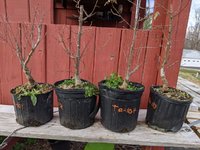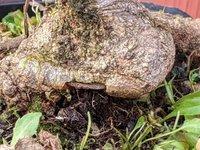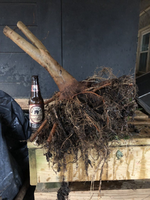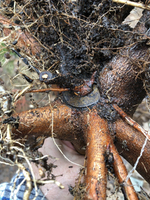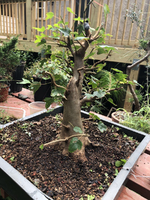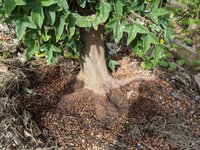cheap_walmart_art
Omono
I saw these gnarly little tridents in the side lot of Brussels this week and figured I'd grab them, wire scars and all. They also look to have been grown through washers. While I've heard of this before, never dealt with it on a tree. Obviously it's to bulk up nebari but is the idea to let it grow over the washer and engulf it? I'm thinking I'm going to Repot these this spring and wound them in areas I'd like to see roots and hit them with hormone powder and bury deep. Just let them swallow the washers.
